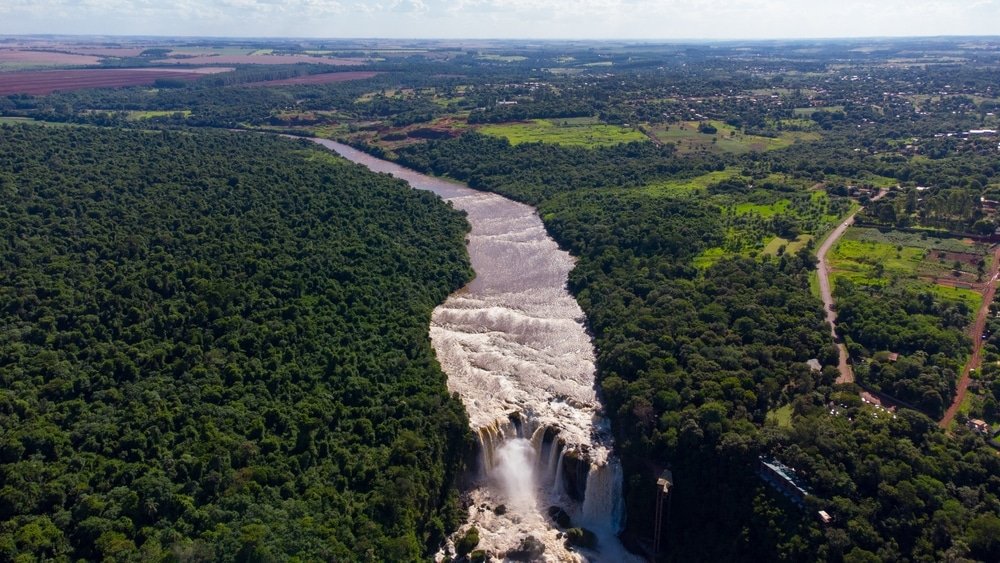Apple had doubled its investment up to $200 million to expand its Restore Fund, also doubling the tech giant’s commitment to promoting carbon removal.
The project, which is between Apple and partners including Conservation International, is funding nature-based carbon removal projects.
What is Apple’s Restore Fund?
Apple’s Restore Fund was launched in 2021 with an initial commitment worth $200 million from the company and its partners, Conservation International and Goldman Sachs.
It was part of Apple’s roadmap to be net zero for its entire supply chain and life cycle of every product by 2030. To achieve that, the company aims to lower all emissions by 75% by the same period and offset any remaining emissions with high-quality carbon removal credits.
The world’s largest tech company created the Fund to encourage investments into protecting and restoring critical ecosystems and scale nature-based carbon removal solutions. Through high-quality carbon credits the projects generate, help businesses deal with their residual emissions that they can’t yet reduce or avoid.
In addition to the initial $200 million, Apple will invest another $200 million in the Fund to expand it. Climate Asset Management, a joint venture of Pollination and HSBC Asset Management, will manage the new investment portfolio.
- The new portfolio is also looking to remove 1 million metric tons of CO2 per year while aiming to generate a financial return for investors.
For company suppliers-turned-partners in the fund, the portfolio will give them the means to decarbonize through high-impact carbon removal projects.
Commenting on the announcement, VP of Environment, Policy, and Social Initiatives, Lisa Jackson noted that:
“The Restore Fund is an innovative investment approach that generates real, measurable benefits for the planet, while aiming to generate a financial return… The path to a carbon neutral economy requires deep decarbonization paired with responsible carbon removal, and innovation like this can help accelerate the pace of progress.”
Apple and its partners are partnering with forestry managers for sustainable forest management for optimal carbon and timber production. Their work creates not just revenue from the timber but also from high-quality carbon credits.
With the additional $200 million, the Restore Fund is set to grow with a new portfolio of carbon removal projects.
Advancing a New and Unique Model for Carbon Removal
Carbon removal is vital to mitigating climate change and reaching global climate goals, as highlighted by the scientific body, IPCC.
Apple and Climate Asset Management are taking a unique approach to prospect projects, pooling two different types of investments:
- nature-forward agricultural projects that yield revenue from sustainably managed farming practices, and
- projects that restore critical ecosystems that remove and store CO2.
The goal of this unique blended fund structure is to achieve both financial and climate benefits for investors. All the while promoting a new model for carbon removal that addresses the potential for nature-based solutions.
All investments in the Restore Fund are subject to stringent social and environmental standards.
Carbon Removal Investments for Apple’s Climate Goal
Apple has already achieved carbon neutrality for its corporate operations last year. But the leading tech also called on its suppliers to do the same across its operations by 2030. And that includes both their Scope 1 (direct emissions) and Scope 2 (electricity-related) emissions.
Achieving its ambitious climate goal is possible by offsetting Apple’s unavoidable emissions with high-quality carbon removal credits.
Suppliers can cut their emissions by abating direct carbon footprint, improving energy efficiency, and shifting to using renewable energy. As progress of this advocacy, Apple revealed that 250+ of its manufacturing partners also pledged to use 100% renewable energy to power their production by 2030.
The previous investments that the tech firm committed along with Conservation International and Goldman Sachs were in Brazil and Paraguay. Example of a Restore Fund project in Paraguay shown below involves a sustainably managed timber farm on one side of the road, and a preserved natural forest on the other side.

These carbon reduction projects will restore 150,000 acres of sustainably certified forests and protect another 100,000 acres of native forests, grasslands, and wetlands. They aim to remove 1 million Mt of CO2 from the atmosphere each year by 2025.
Monitoring Investments Impact
For accurate measurements and monitoring of the Restore Fund projects’ impact, Apple is using advanced remote sensing technologies. These include the Upstream Tech’s Lens platform, Maxar’s satellite imagery, and Space Intelligence’s Carbon and Habitat Mapper. Together, they help the company create forest carbon maps of the project areas.
Apple also explores using LiDAR Scanner on iPhone to further improve monitoring capabilities on the ground.
The detailed maps those tech produce will help ensure that projects meet Apple’s high standards before investments are made. They’re also important to quantify and verify the carbon removal impact of the projects over time.

